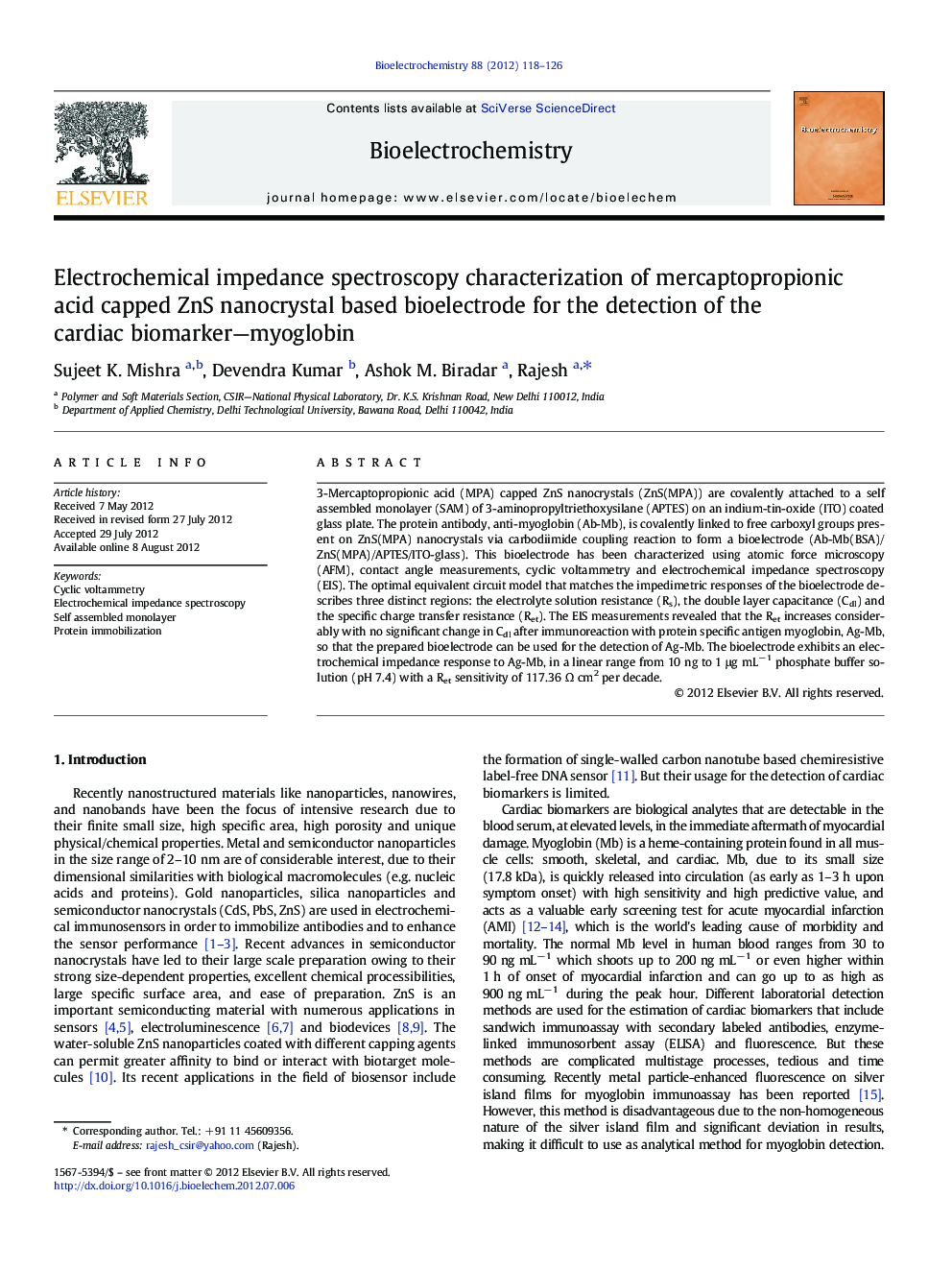| Article ID | Journal | Published Year | Pages | File Type |
|---|---|---|---|---|
| 1271739 | Bioelectrochemistry | 2012 | 9 Pages |
3-Mercaptopropionic acid (MPA) capped ZnS nanocrystals (ZnS(MPA)) are covalently attached to a self assembled monolayer (SAM) of 3-aminopropyltriethoxysilane (APTES) on an indium-tin-oxide (ITO) coated glass plate. The protein antibody, anti-myoglobin (Ab-Mb), is covalently linked to free carboxyl groups present on ZnS(MPA) nanocrystals via carbodiimide coupling reaction to form a bioelectrode (Ab-Mb(BSA)/ZnS(MPA)/APTES/ITO-glass). This bioelectrode has been characterized using atomic force microscopy (AFM), contact angle measurements, cyclic voltammetry and electrochemical impedance spectroscopy (EIS). The optimal equivalent circuit model that matches the impedimetric responses of the bioelectrode describes three distinct regions: the electrolyte solution resistance (Rs), the double layer capacitance (Cdl) and the specific charge transfer resistance (Ret). The EIS measurements revealed that the Ret increases considerably with no significant change in Cdl after immunoreaction with protein specific antigen myoglobin, Ag-Mb, so that the prepared bioelectrode can be used for the detection of Ag-Mb. The bioelectrode exhibits an electrochemical impedance response to Ag-Mb, in a linear range from 10 ng to 1 μg mL− 1 phosphate buffer solution (pH 7.4) with a Ret sensitivity of 117.36 Ω cm2 per decade.
► A comprehensive impedance study on a ZnS nanocrystal based immunosensor is described. ► ZnS nanocrystals are covalently attached to a SAM of APTES on an ITO‐glass plate. ► ZnS nanocrystals act as effective conjugates for Ab-Mb bindings at the electrode. ► The immunosensor shows a non capacitive behavior with Ret dominant impedance.
